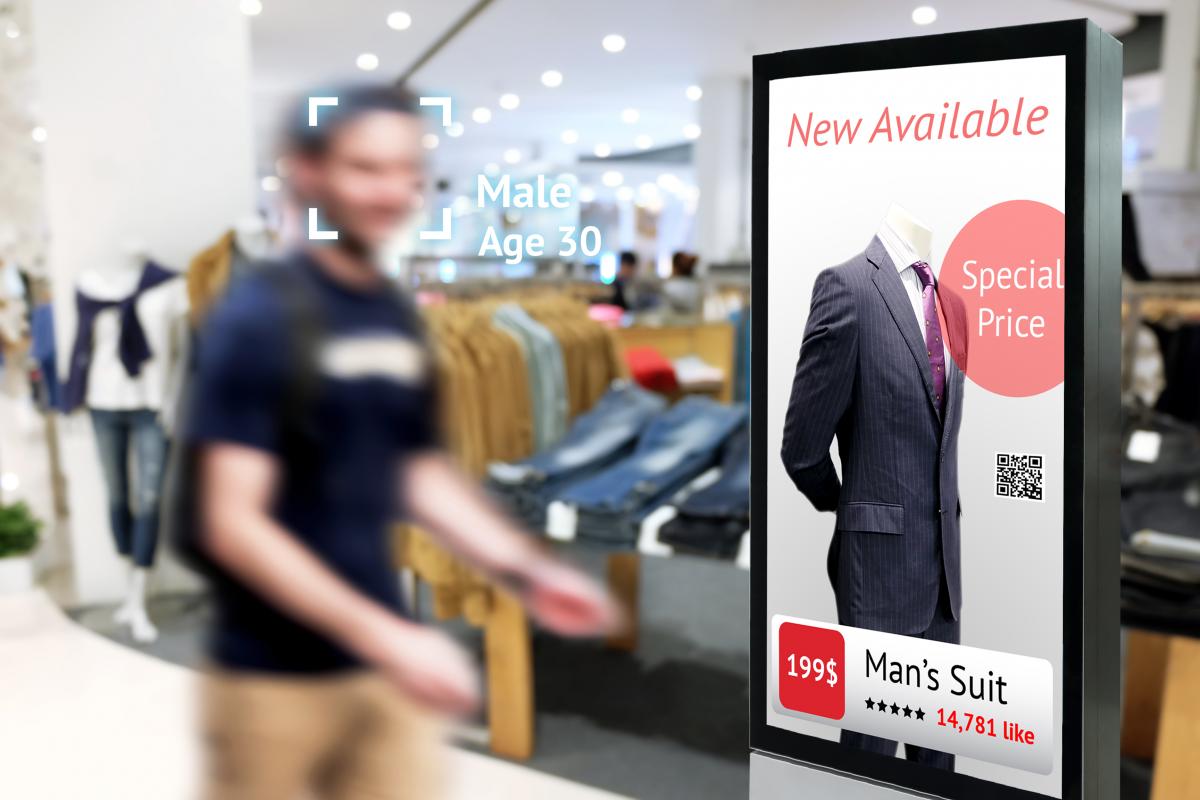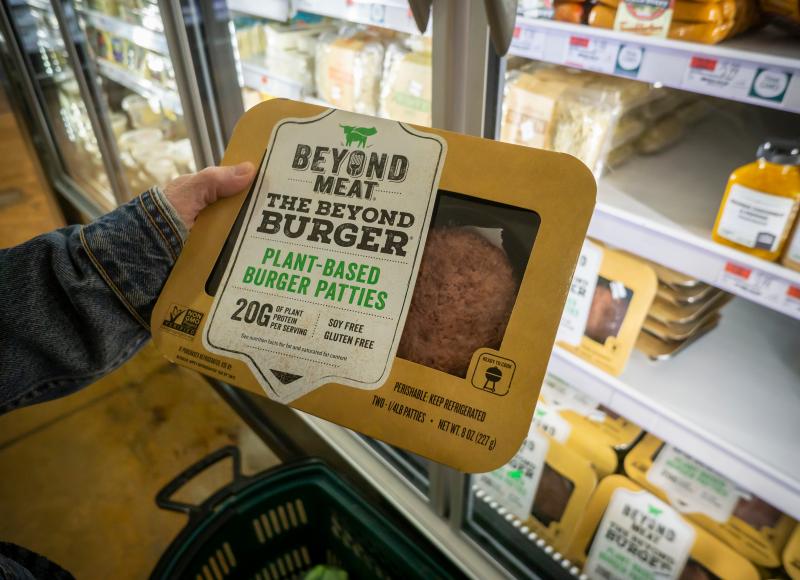High-Tech Mirrors and Talking Storefronts – Physical Retailing Reloaded
High-Tech Mirrors and Talking Storefronts – Physical Retailing Reloaded
Example 1: Farfetch, a Successful Innovator
The now largest online platform for luxury fashion serves as virtual marketplace for boutiques and clothing retailers. Since April 2017, its brick-and-mortar prototype, “Store of the Future” in London, has made technological applications an integral part of its in-store retail experience. The company calls its vision “augmented retail” as it seeks to combine the physical, personal experience inside the store with the advantages of online shopping. Together with other start-ups, Farfetch developed modules that can be integrated into the “Store of the Future” concept – just like apps on a smartphone, as the textile industry trade paper Textilwirtschaft describes it. The concept can also be adopted in its entirety or in selected components by the brand and boutique partners. The costs of hardware and set-up are borne by the partners.
So, what do these modules look like? To give an example: Farfetch analyses the in-store movements of consumers. The products they look at are captured in a personalised wish list. In the next step, customers have the option to virtually try on the selected pieces of clothing in smart mirrors and to click themselves through different colours and styles, among other options. The technologies are supposed to boost retail productivity, and to this end, consumption data are captured, facilitating the interaction between customers and sale staff. The “Store of the Future” technology was introduced in the flagship store of designer Thom Browne in New York City in March 2018. Apparently, the technology has also convinced companies of long-standing tradition: In February 2018, Farfetch announced a global innovation partnership with CHANEL whose purpose will be to develop a number of digital initiatives, both online and offline.
It remains to be seen whether the applications will deliver long-term growth in sales or whether they merely represent a short-term PR stunt. But one thing is safe to say: If successful, the company’s versatile technical applications could set new standards in the retail sector.
Example 2: adidas Prints Shoes
Adidas relies increasingly on digitisation and customised products using 3D print technology. As early as 2017, as Textilwirtschaft reports, 3D printers produced 5,000 pairs of shoes with customised soles; today, a year hence, that number is said to be up in the six-digit range. The customer thus gets a bespoke product, personally made for him or her. The latest insights of adidas suggest that customers are prepared to pay substantially higher amounts for such shoes than for mass-produced ones. According to adidas, production is soon to be moved to the stores. Three to five years from now, customers will be able to have their shoes custom-made directly at the store.
Example 3: Amazon and Saturn Ditch Checkout Tills
In March 2018, consumer electronics retailer Saturn launched a pilot project in its outlet in the Austrian town of Innsbruck, as the computer magazine PC-Welt reported. Labelled Saturn Express, the pilot store makes do without a checkout area. Instead, shoppers use an app to pay directly at the shelf. Custom-developed for Saturn, the app scans the bar code of the chosen product and lets the buyer pay for it via credit card or PayPal. Downloading the app onto their smartphone is free of charge for customers. They register for the app prior to its first-time use, and are then at liberty to scan the desired goods on their own and to authorise payment if satisfied with their choice.
Amazon has been field-testing a similar concept in the United States at outlets of its Amazon Go supermarket chain. Shoppers with an Amazon accounts analogously need to download an app of this type onto their mobile phones and log in as they enter the store. Sensors and cameras watch which products are put in the shopper’s basket or taken back out; the selected items are then automatically added up.
What Else Is New? – An Overview
- So-called “connected stores” analyse the movements of consumers in the in-store business. This can be done via the lighting system, for instance: Philips is one of several companies who equip their lamps with sensors that measure footfall. This makes it easy to identity areas that are less frequented and could be optimised to become more productive. The products viewed are collected in a personalised wish list.
- The fashion retail sector now deploys smart fitting rooms. These have screens installed inside that display the items brought in by the customer and provide a variety of features, such as retrieving details about the availability of the items (sizes, colours, etc.), requesting assistance, using social media functions or changing the lighting inside the fitting room.
- Even today, brick-and-mortar retailing already relies on contactless payment, self-scanning or beacons on a massive scale. These beacons represent small Bluetooth transmitters that shoppers locate inside the store using a certain smartphone app in order to retrieve personalised offers. But while self-scanning has come to be increasingly accepted, retailers have so far hesitated to embrace and follow up on the beacon technology. Some sceptics have already voiced doubt regarding the spread of beacon technology in physical retailing.
- Smart or virtual storefronts display extra information such as promotions and specials, advertise events and happenings or integrate product images and videos in the storefront screen. Passing customers may choose to interact with them via their mobile phone and, if they feel like it, transact a purchase even if the store is closed. This translates into additional sales opportunities with returning customers outside business hours, especially for stores in busy downtown locations. Jewellery stores use this application as night-time shopfront while the actual pieces are stored safely in the vault.
- But new concepts are also emerging for existing retail units: Tommy Hilfiger, for one, assumes that up to two thirds of its retail areas will soon cease to be used for the classic retailing of merchandise. Instead, the floor space will be occupied by technological gadgetry like order points or flat-screen walls with looped commercials and posts, as well as by lounge and café areas. As use options and activities increasingly blend into one, retail units acquire “multi-use capacity.”
Mechanisation of Retail Units Expected to Increase in Future
Many of these develops are already deployed in today’s brick-and-mortar retail business. New technologies are in preparation that will instantly recognise customers as they enter the store and serve them the way they are used to and appreciate as a result of their online shopping experience. New developments are coming on-stream all the time – and this is precisely what may pose a problem: What sort of technology should in-store retailing single out? What solution is successful and will carry the day? And which technologies are dispensable because they offer value-added neither to retailers nor to shoppers?
Conclusion: Smart technologies are gradually closing the gap between the conventional in-store experience and online shopping to form a continuous whole. Retail companies that do not operate their own online stores yet run a real risk of falling behind, the same being true inversely for online stores lacking a physical presence. This in turn makes it reasonable to assume that the coming years will bring an increased mechanisation of the physical retail landscape that, in addition to stores in shopping centres, will particularly involve retailers in high-street pitches. Another trend will be the accelerated expansion of pure e-tailers into brick-and-mortar retailing – some of them having already opened physical stores, such as mymuesli or Mister Spex. Having a real-life presence deepens the proximity to their clientele and enables them to offer a complete “customer journey” or shopping spree through their stocked goods.
However, the brave new world of smart retail equipment drives up the capital expenditures per store in physical retailing. The consequence could conceivably be an accelerated optimisation of existing branch networks in order to afford the high new technological standard by reducing the number of outlets. Flagship stores or brand manufacturers and international multiples will probably trailblaze the development. At the time of this writing, the fashion multiple Zara and H&M are manifesting first signs of such a development, as they have started to concentrate on a lower number of larger stores in the high streets of major German cities and metropolises.
Contact person: Dr. Joseph Frechen, Head of Branch Hamburg at bulwiengesa, frechen [at] bulwiengesa.de




![Photo: Sikander Iqbal [CC BY-SA 4.0 (https://creativecommons.org/licenses/by-sa/4.0)], from Wikimedia Commons Save yourself the trouble of queuing at the checkout by using your Amazon Go app](/bulwiengesa-blog/sites/default/files/styles/standard/public/2018-10/Amazon_Go_-_Seattle_%2820180804111407%29.jpg?itok=wiO7v-tp)

